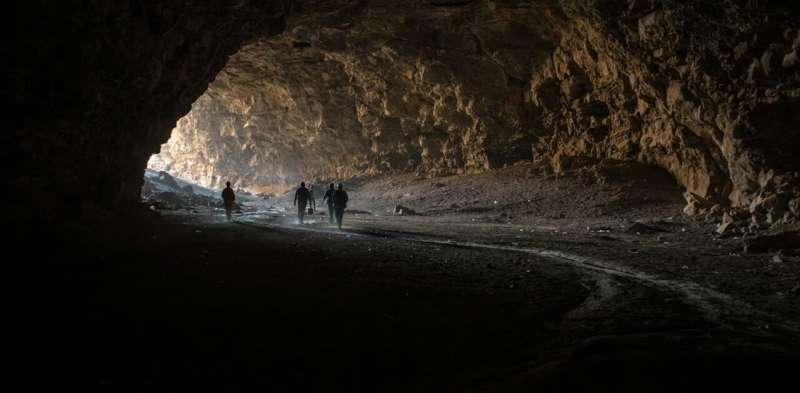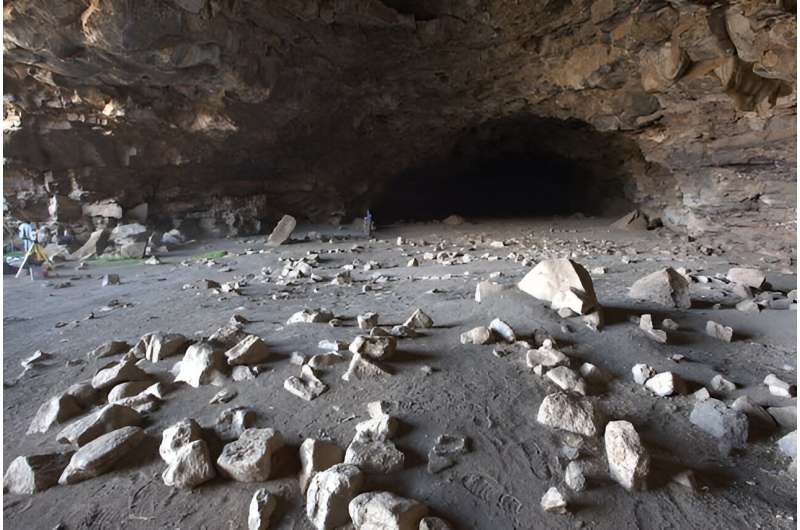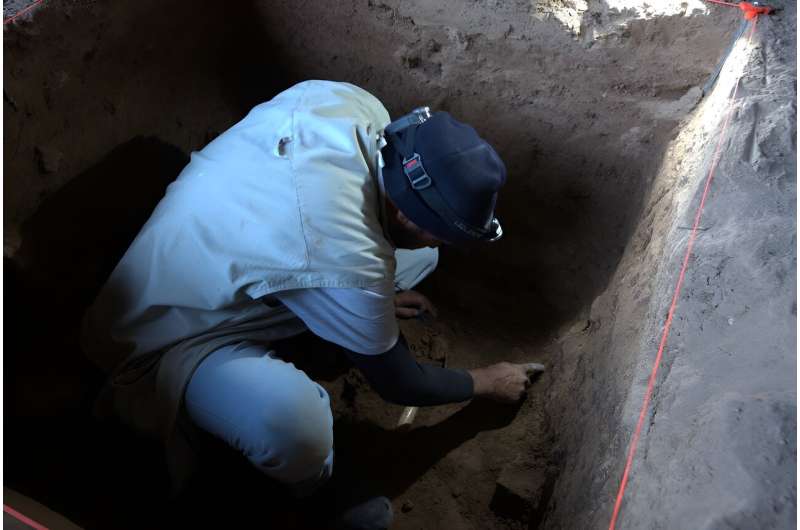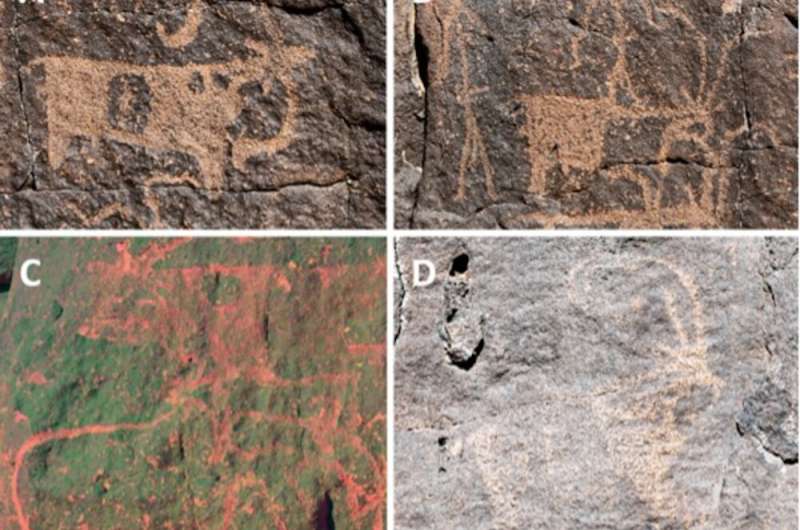This article has been reviewed according to Science X's editorial process and policies. Editors have highlighted the following attributes while ensuring the content's credibility:
fact-checked
peer-reviewed publication
trusted source
written by researcher(s)
proofread
First evidence of ancient human occupation found in giant lava tube cave in Saudi Arabia

If you look from above, you can see thousands of stone structures dotting the landscape of the Arabian peninsula. On the ground, you can find a bounty of stone tools and ancient fireplaces scattered along the edges of ancient lakes, as well as rock art depicting hunting and herding scenes in the surrounding mountains.
Despite the visibility of these sites, only in the past decade or so have archaeologists taken a dedicated interest in them. Some of the structures have now been dated at up to 10,000 years old.
However, the arid climate, baking days and freezing nights, and intense wind erosion are not kind to some of the other relics archaeologists prize. To date, there has been little found in the way of fossils or the kind of deeply buried, layered deposits that can open a window onto the history of a place.
Until recently, no archaeologists had surveyed any of the hundreds of caves and lava tubes recorded across northern Arabia. In 2019, our team began to look in these subterranean locations—and in a new study published April 17 in PLoS ONE, we report on the first documented occupation of a lava tube in the Arabian Peninsula.
The Umm Jirsan lava tube
The Umm Jirsan lava tube lies some 125 kilometers north of the city of Madinah, in the Harrat Khaybar lava field. The tube formed long ago by cooling lava. It winds an impressive 1.5 kilometers, and reaches 12 meters in height and 45 meters in width in some sections.

The first thing you notice when venturing into the tube's dark and meandering tunnels is the sheer number of animal remains. The floor is strewn with piles of bones containing thousands—if not hundreds of thousands—of exceptionally preserved fossils.
These bone-piles are the work of striped hyenas, which drag bones underground to eat, stash away for times of food scarcity, or process and feed to cubs. This process, repeated over millennia, has produced some of the most incredible accumulations of fossils seen anywhere in the world.
But it's not all just bones. When we surveyed the entrances of Umm Jirsan—essentially areas where the roof has collapsed, providing access to the lava tube—we uncovered hundreds of stone artifacts made from obsidian, chert and basalt.
Although exciting, these artifacts were all surface finds, making them extremely difficult to date. We needed to look deeper.

Digging in
We excavated in the mouth of the eastern passage, near a series of semi-circular stone structures of an unknown age or function. The excavation uncovered more stone artifacts—all made from fine-grained green obsidian—as well as animal bones and charcoal.
Most of the stone artifacts came from a discrete sediment layer roughly 75 centimeters beneath the surface. Radiocarbon dating of the charcoal, and dating of the sediments using a method known as optically stimulated luminescence dating, revealed this main occupation phase likely occurred between 7,000 and 10,000 years ago.
We also found some interesting objects in the surrounding landscape. These included more stone artifacts and circular structures, as well as a so-called "I-type" structure. These constructions are believed to date to around 7,000 years ago, based on their association with large rectangular structures known as mustatils, which we believe were used for ritual animal sacrifices.
We also found the first rock art discovered in the area. This includes depictions of herding scenes of cattle, sheep and goat, and even hunting scenes involving dogs. This art has similarities with other rock art in Arabia from the Neolithic and the later Bronze Age. It includes overlapping engravings, suggesting people visited the area repeatedly over thousands of years.
We also found human remains at Umm Jirsan, which we dated to the Neolithic and Bronze Age periods. By analyzing the carbon and nitrogen in these remains, we found these people's diets were consistently high in protein—though they ate more fruit and cereals over time.

Interestingly, this change in diet appears to coincide with the arrival of oasis agriculture in the region. This saw the emergence of sophisticated farming and water management techniques that enabled people to settle in the deserts more permanently and cultivate plants such as dates and figs.
We made another interesting finding after coming home from the dig. Studying maps of archaeological structures in the wider area, we noticed Umm Jirsan sits along a "funerary avenue" connecting two major oases.
These funerary avenues, which consist of chains of tombs stretching hundreds of kilometers, are believed to have been routes used by Bronze Age pastoralists as they transported their herds between water sources.
We think Umm Jirsan may have been a stopping-off point for pastoralists, a place that offered shelter and water in an otherwise dry and harsh environment.
Archaeologists have made remarkable finds in Arabia in recent years, in settings such as ancient lakebeds. Our finds at Umm Jirsan add another important element to the story of Arabian societies over time, and how they interacted with this dramatic landscape.
Journal information: PLoS ONE
Provided by The Conversation
This article is republished from The Conversation under a Creative Commons license. Read the original article.![]()





















